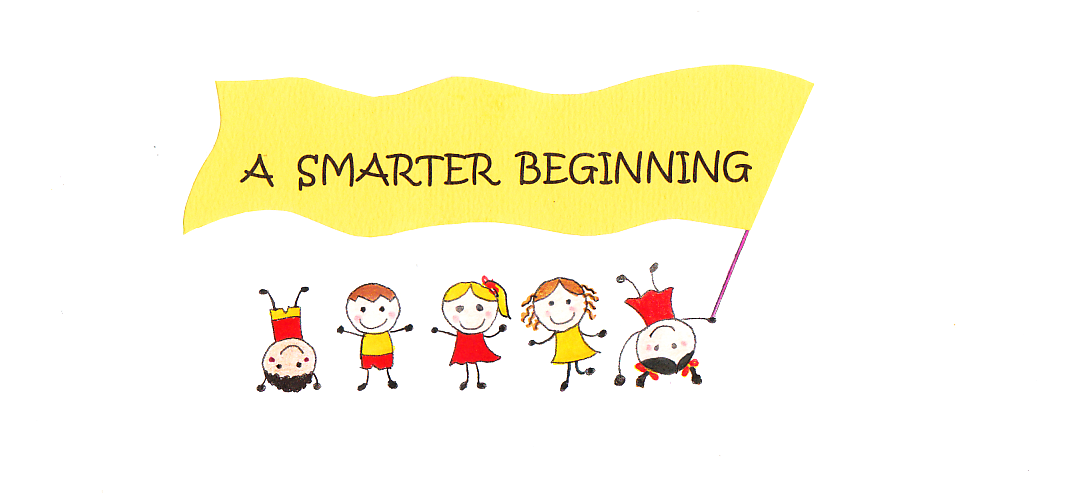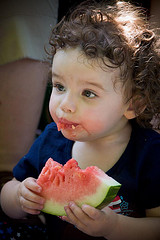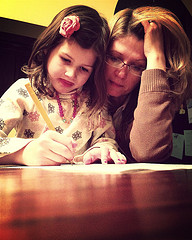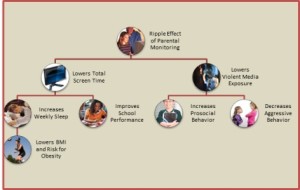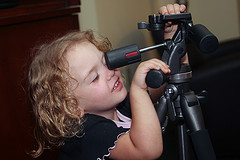 There are few things more important to producing secure children than healthy self-esteem. Healthy self-esteem is what enables children to try new things, to meet all the challenges that they face, to have the courage to try, to risk and even to fail. And it starts from the very beginning as your first smiles beam down upon her to express your unconditional love, as your soothing touch when you hold him comforts him, as she learns to walk, to eat by herself, to talk, to tie his own shoelaces.
There are few things more important to producing secure children than healthy self-esteem. Healthy self-esteem is what enables children to try new things, to meet all the challenges that they face, to have the courage to try, to risk and even to fail. And it starts from the very beginning as your first smiles beam down upon her to express your unconditional love, as your soothing touch when you hold him comforts him, as she learns to walk, to eat by herself, to talk, to tie his own shoelaces.
What is Self-Esteem?
The National Association for Self-Esteem defines self-esteem as “The experience of being capable of meeting life’s challenges and being worthy of happiness” (www.self-esteem-nase.org/what.php). This definition is based on the idea that self-esteem is closely related to one’s sense of self-confidence and one’s feelings of self-worth. Translated, this means one’s sense of competence and worthiness. Is there such a thing as too much self-esteem, the kind that produces egotism or arrogance or a sense of superiority? No. These traits are caused by low self-esteem that the person compensates for. By contrast, “authentic self-esteem” is self-esteem based on reality(www.self-esteem-nase.org/what.php). It’s a realistic appraisal of our competence and our worth based on the values of the culture we live in. When we have authentic self-esteem, we don’t need to puff ourselves up.
Where Does Self-Esteem Come From?
Our childhood experiences have a large effect on our self-esteem. This includes how our parents, family, teachers, peers, coaches, etc, treat us and the messages they give us about ourselves. But it also includes our experiences, the times we tried new things and found we could do them, the things we found we could do well and got us genuine praise and respect. Actually, “Self-esteem and achievement go hand in hand. They feed each other” (www.self-esteem-international.org/content/5-research.htm).
Negative Self-Esteem
When the messages children receive from others are habitually negative, they usually have debilitating effects. The resulting negative self-esteem can lead to depression, anxiety, feelings of inferiority and inadequacy, social and personal withdrawal, poor personal relationships, lack of healthy self-assertion, eating disorders and poor adaptation skills.
Given the ability of low self-esteem to eventually reduce the quality of life of a person, every well-meaning parent wants to build positive self-esteem in his or her child. The question is, “How?”
How to Build Children’s Self-Esteem
Self-esteem affects achievement in school, friendships, ability to face and deal with problems such as peer pressure, responsibilities, frustration, challenges, problem solving, risk taking, even physical health. In fact, there are few aspects of life that self-esteem does not touch upon. What can parents do to build healthy self-esteem in their children?
Start with plenty of love, the unconditional kind. This means whatever your child does, right or wrong, whatever her strengths or weaknesses, you love her just because you do. Show this with hugs, kisses, smiles and cuddles. Don’t neglect to tell her how much you love her. She needs to hear it. And when you correct her behavior, let her know that it’s her behavior you don’t approve of, not her.
Time together and attention count a lot, too. They tell your child that he’s important, so important that he gets your undivided attention. No cell phones, texting, phone conversations, checking the mail – at least not during the time you’re giving to him.
Encourage her to explore, discover and take risks and don’t interfere or hover. Show her you have enough faith in her abilities so that she doesn’t need your help every step of the way. In other words, when possible, be patient and let her discover how to do it on her own. Let her make mistakes and muddle through because this is how she learns. But do encourage her to try again when she fails. Just remain patient and stay calm.
When you encourage or praise him, be specific and not general. Be real and don’t over praise. It’s not, “Hey, that was great!” or “You were the best one.” Try, “I think you were really nice to offer to help your friend with his chores” or “You worked hard to improve your baseball swing and you’re getting really good.” Too much praise can make a child feel he has too much to live up to the next time and worry that he may not be able to meet your expectations.
Some other things:
-Try to get her to talk about her feelings when something is bothering her and be a good listener.
- Empathize with her rather than look for solutions.
- Don’t negatively compare him to others. It makes him feel small and unworthy, as if you’d rather have someone else for your child.
- Don’t criticize or talk negatively about her. It will make her feel unworthy.
- Don’t set unrealistically high standards that he cannot possibly meet. This leads to inevitable failure.
Want to raise children with authentic self-esteem? Give yourself the same message you need to give your children: “Yes I can.”
If you have any additional ideas, I’d love to hear from you.
Photo credit: casch 52/Foter/Creative Commons Attribution-NonCommercial-NoDrivs 2.0 Generic (CC BY-NC-ND2.0
